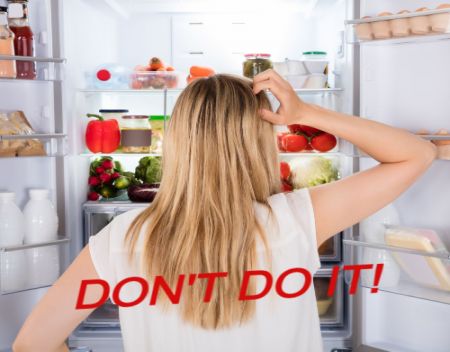Blog Categories
- Appliances Four
- Athletic Seating
- Auto Helpers
- Automated Stock Rooms
- Chocolate Four
- CuraFlo
- Damaged Goods Dating
- Flood Insurance Four
- Game Addict
- Hi Tech Pest Control
- HVAC Four
- Medical Labels Four
- Mental Health Four
- National CWS
- Promotional Ideas
- Seguros Lara Insurance
- Stem Cell Worx
- The Hidden Truth
- The Last Refuge
- The Mozilla Blog
- Video Editing Four
- Web Design Dev
- Website Development Four
- Windows Blog
What Not to Put in the Refrigerator

When returning home from the supermarket, storing your groceries in the refrigerator seems like the most obvious thing to do. However, that’s not always the best course of action. Is the refrigerator the best place to keep certain foods? Today we’ll be going over a few things you shouldn’t store in your refrigerator.
Potatoes
These vegetables and cold temperatures don’t mix well. The cold converts the potato starch into sugar, resulting in a gritty texture and a sweet flavour. Potatoes should be kept at 45° F (most refrigerators are set from 35° F to 38° F). Put them in a paper bag in a cool pantry. Beware of sunlight, as it causes chlorophyll to accumulate, turning your potatoes green and bitter.
Onions
Air circulation is important if you want your onions to stay nice and fresh. Store whole onions in a hole-punched paper bag in the pantry. Do not keep them near potatoes. Onions emit gas and moisture that can potentially cause potatoes to spoil quickly. Chopped onions should be refrigerated.
Coffee
The moisture in the fridge causes then coffee beans to deteriorate, meaning you won’t be getting the bold flavour you’d expect from a morning brew. The temperature fluctuates every time you open the door to the fridge, creating condensation, which creates even more moisture. Store your coffee beans in an airtight container in the pantry instead.
Tomatoes
The cold air drastically alters chemical pathways in tomatoes. It slows chemicals that contribute to fresh flavour and accelerates others that dull flavour. Therefore, whole tomatoes should be stored on the counter for a more delicious taste.
Garlic
Garlic gloves fare best when they’re kept in temperatures between 60 and 65° F. Put the bulbs in a ventilated container to let the moisture in and store it in a cool place.
Honey
This sweet stuff should not go in the fridge. Honey is known to seize up and crystallize in colder temperatures. Room-temperature is the best temperature for this sweetener.
Re Posted From: What Not to Put in the Refrigerator

When returning home from the supermarket, storing your groceries in the refrigerator seems like the most obvious thing to do. However, that’s not always the best course of action. Is the refrigerator the best place to keep certain foods? Today we’ll be going over a few things you shouldn’t store in your refrigerator.
Potatoes
These vegetables and cold temperatures don’t mix well. The cold converts the potato starch into sugar, resulting in a gritty texture and a sweet flavour. Potatoes should be kept at 45° F (most refrigerators are set from 35° F to 38° F). Put them in a paper bag in a cool pantry. Beware of sunlight, as it causes chlorophyll to accumulate, turning your potatoes green and bitter.
Onions
Air circulation is important if you want your onions to stay nice and fresh. Store whole onions in a hole-punched paper bag in the pantry. Do not keep them near potatoes. Onions emit gas and moisture that can potentially cause potatoes to spoil quickly. Chopped onions should be refrigerated.
Coffee
The moisture in the fridge causes then coffee beans to deteriorate, meaning you won’t be getting the bold flavour you’d expect from a morning brew. The temperature fluctuates every time you open the door to the fridge, creating condensation, which creates even more moisture. Store your coffee beans in an airtight container in the pantry instead.
Tomatoes
The cold air drastically alters chemical pathways in tomatoes. It slows chemicals that contribute to fresh flavour and accelerates others that dull flavour. Therefore, whole tomatoes should be stored on the counter for a more delicious taste.
Garlic
Garlic gloves fare best when they’re kept in temperatures between 60 and 65° F. Put the bulbs in a ventilated container to let the moisture in and store it in a cool place.
Honey
This sweet stuff should not go in the fridge. Honey is known to seize up and crystallize in colder temperatures. Room-temperature is the best temperature for this sweetener.
Re Posted From: What Not to Put in the Refrigerator

